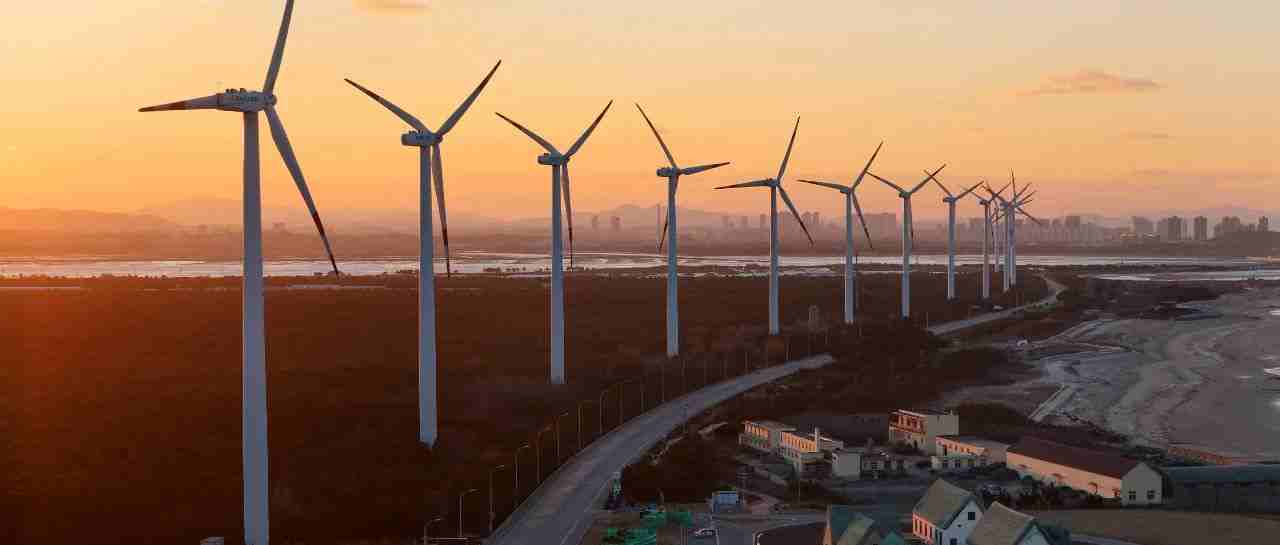What Should China Do With Its Excess Renewables?

The rapid growth of the green energy sector has been a boon to the country’s economy. But as demand begins to slow down, policymakers need to find new markets.
In 2023, China increased its solar capacity by 55%, wind by 21%, and hydro by 2%. With hydro conditions expected to recover after a down year, renewables generation is positioned to go even higher in 2024.
More is needed, however. For China to meet its carbon intensity targets by 2025, emissions need to fall about 7% a year in the next two years.
A key challenge is the need for better grid capacity in many provinces. To solve this problem, China must prioritize policy interventions. Power system reforms that focus on optimizing the utilization of the existing capacity and that increase system flexibility are critical to sustaining the momentum of clean energy installations.
Interestingly, clean transition trends in Europe reflect a similar shift in policy focus. Renewables now make up nearly half of total electricity production in the European Union, with wind and solar leading the way. This has led the bloc to prioritize reforming power grids and instituting flexibility mechanisms over new installations.
An NEV parking lot in Chongqing, March 11, 2024. VCG
As the need for new installations begins to taper off, what will become of the country’s massive manufacturing capacity?
In short, China will need to boost clean energy exports. Managing this shift is increasingly important not only for the renewables industry but also for the larger economy, as China is counting on exports of the so-called “new three” growth industries — solar cells, lithium batteries, and electric vehicles — to drive growth in the future.
Together, these three industries saw a roughly 30% rise in exports last year. But there are signs they are becoming victims of their own success. Both the domestic and the international markets face an oversupply of solar PVs and battery cells that are driving costs down, and a “buyers market” for clean energy has begun to form. This is good for the climate, but if China wants to keep its new energy sector afloat, it needs to find new markets for its products.
One potential solution is a marriage of convenience with other Asian nations, particularly emerging economies such as Indonesia, Vietnam, Bangladesh, Thailand, Malaysia, and the Philippines. A recent report found that ASEAN nations must install 230 GW of new wind and solar capacity by 2030 to meet the International Energy Agency’s “net zero” goals.
That’s easier said than done, as most of these countries also want to retain control over their supply chains. But if they’re willing to take advantage of low prices to invest in clean energy deployments — and if China is willing to invest in local manufacturing capacity — both sides could stand to gain.
In turn, that could create a positive feedback loop, allowing the clean energy industry to take off in the region. This will not only allow the region to drive economic prosperity, but also play a pivotal role in helping the world meet its goal of tripling global renewables capacity by 2030.
Aditya Lolla is the Asia Program Director at Ember Climate.
Editor: Cai Yiwen.
(Header image: A wind farm in Rongcheng, Shandong province, Jan. 24, 2024. VCG)
Download the new Sixth Tone app at the App Store or Google Play
APK file for Android:
https://image4.sixthtone.com/pkg/sixthtone.apk
(Copy URL and open in browser)
最新评论
推荐文章
作者最新文章
你可能感兴趣的文章
Copyright Disclaimer: The copyright of contents (including texts, images, videos and audios) posted above belong to the User who shared or the third-party website which the User shared from. If you found your copyright have been infringed, please send a DMCA takedown notice to [email protected]. For more detail of the source, please click on the button "Read Original Post" below. For other communications, please send to [email protected].
版权声明:以上内容为用户推荐收藏至CareerEngine平台,其内容(含文字、图片、视频、音频等)及知识版权均属用户或用户转发自的第三方网站,如涉嫌侵权,请通知[email protected]进行信息删除。如需查看信息来源,请点击“查看原文”。如需洽谈其它事宜,请联系[email protected]。
版权声明:以上内容为用户推荐收藏至CareerEngine平台,其内容(含文字、图片、视频、音频等)及知识版权均属用户或用户转发自的第三方网站,如涉嫌侵权,请通知[email protected]进行信息删除。如需查看信息来源,请点击“查看原文”。如需洽谈其它事宜,请联系[email protected]。